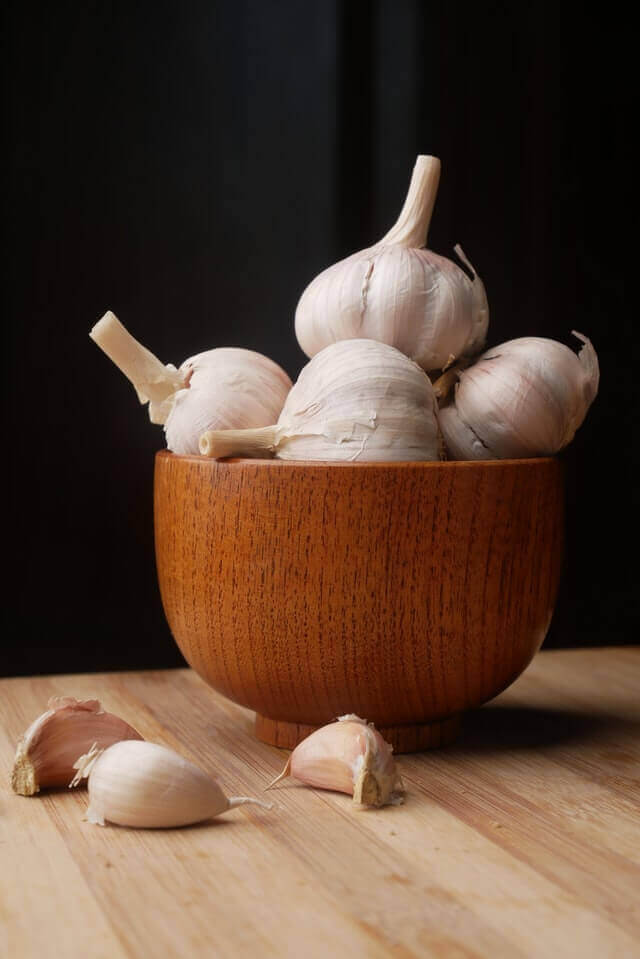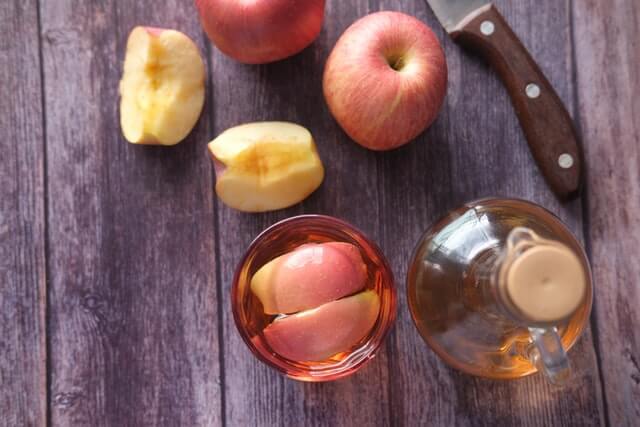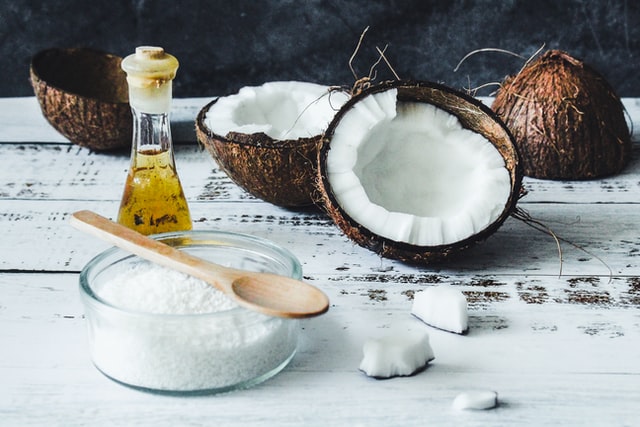Before talking about natural remedies for yeast infection, are you sure that you already have a yeast infection?
So follow me to know more about yeast infection and then we'll talk more and more about natural remedies for yeast infection.
What Is A Yeast Infection?
Infection is mainly caused by a yeast-like fungus called Candida albicans.
It’s a normal saprophytic microorganism of the digestive system and skin which needs warmth and moisture to survive.
It has many names as Candidiasis or Moniliasis or Thrush or Yeast infection.
Source Of Infection For Yeast Infection:
-
Exudate or secretion of infected man or animal.
-
Sputum of an infected patient.
Can be transmitted through direct contact with these sources or through:
- Babies can take it from breastfeeding.
- Inhalation by airborne dust infection.
- Sexual intercourse.
Different Forms Of Candidiasis:
-
Cutaneous Moniliasis:
-
On The Skin:
-
Mainly seems on human beings with extended publicity to moisture for a long time as fish handlers and housewives.
-
Localized in damped folds Of the skin and mainly closed areas as the axilla, groins, intramammary area, interdigital cleft, umbilicus.
-
Appears with the following symptoms:
-
Redness
-
Exudation.
-
Desquamation.
-
On The Nails:
-
Found in nail beds with:
-
Swollen.
-
Redness.
-
Tenderness.
-
Chronic paronychia.
-
Thick greasy material.
-
Debris accumulated.
-
Transverse grooving.
2. Oral Moniliasis:
-
Common in infants.
-
Creamy white patches on a red, raw inflamed mucous membrane of the tongue, pharynx, esophagus.
3. Bronchial Moniliasis:
-
Occurs as a secondary infection for other diseases such as tuberculosis and lung cancer.
-
Characterized by an increase in temperature and pulse with chest and pleural pain.
4. Moniliasis In Genitalia:
Already found in both genders, especially in females.
The most spread form of yeast infection.
-
In Women:
-
Has many and several names such as candida vulvovaginitis, vaginalthrush, and vaginal candidiasis as the most target tissue in women are the vagina and its surroundings.
-
The signs appear clearly as shown:
-
Whitish or grayish patches characterized by creamy thick vaginal discharge appear on mucosa-thick cottage cheese discharge-.
-
May contain pus or not.
-
Redness of vulva.
-
Itching.
-
Burning.
-
In Men:
-
Known as penile candidiasis that causes balanitis appears with different signs like:
-
White, shiny patches on the penis.
-
Moist skin of the penis.
-
Foreskin or on the folds of skin may find thick white substances.
-
Itching.
-
Feeling of burning on the penis.
-
Pain in the penis.
5. Systemic Moniliasis:
The final and the most serious form, it reaches the blood and causes further effects as it may cause stress to the adrenal gland by secreting ethanol that weakens the body's ability to fight harmful organisms.
The Predisposing Factors For The Yeast Infection:
-
Physiological Factors:
-
Old-aged people.
-
Pregnancy.
-
After parturition.
-
Pathological Factors:
-
Diabetes.
-
immunosuppressive diseases such as HIV/AIDs and cancer.
-
Obese.
-
Frequent long use of antibiotics.
-
Long treatment by the corticosteroids.
-
Chronic diseases such as tuberculosis.
-
Hygienic Factors:
-
Keeping skin or genitalia moist or unclean.
-
Uncircumcised men.
-
Eliminate taking shower after intercourse or oral sex.
-
Wet swimwear or gym clothes.
-
Wearing tight jeans and pantyhose.
-
Using vaginal deodorant, sprays, and douches may be a help for yeast growth and replication.
-
Contact with patient secretions, skin, or making sex with him.
Now you may be sure whether you have yeast infections or not, but you can’t take natural remedies without taking precautions and making preparations for natural remedies for yeast infection.
Arrangements Before Using Natural Remedies For Yeast Infections:
-
Before using any product make sure that it doesn't have any side-effect or allergic effects against you.
-
You should wear your gloves while applying any topical remedy from natural remedies for yeast infection.
-
Apply natural remedies for yeast infection only on the infected area.
-
Never follow topical natural remedies for yeast infection on damaged or indignant or inside the vagina of pregnant women.
-
Finally, we have to use natural remedies for yeast infection as shown below let's see…
Natural Remedies For Yeast Infection:
Natural remedies for yeast infection beat the yeast through three different techniques.
So Let's start with the first category.
-
Making the environment unfavorable for yeast growth by utilizing Lactobacillus acidophilus bacteria that can inhibit the growth of Candida albicans and stimulate the production of antibiotics for candidiasis anti genes.
This category contains three natural remedies for yeast infection.
Yogurt:
-
The first ancient used technique for treating candida Albicans for women.
-
Some people use yogurt with honey for better results.
-
Can be used around the vulva, inserted inside the vagina, or taken orally.
-
It’s one of the safest and most effective natural remedies for yeast infection.
Hydrogen peroxide:
-
It's produced by Lactobacillus acidophilus to inhibit the growth and differentiation of Candida albicans.
-
It's a powerful antimicrobial, antiseptic, and disinfectant.
-
Can be used as a bath, or diluted by water (half hydrogen peroxide and half water).
-
Contraindicated to be used as a vaginal douche.
Probiotics supplements and suppositories:
-
They are probiotics that contain Lactobacillus acidophilus that can be taken orally or vaginally.
-
Maintain the balance between pathogenic yeast and beneficial flora.
-
Taken for 10 days.
-
In the case of vaginal candidiasis, the local remedy will be more effective so suppositories will be better and quicker in effect than oral supplements.
-
The second class is the natural remedies for yeast infections which have an antifungal effect.
This class carries the most used natural remedies for yeast infections nowadays.
Boric Acid:
-
It's been used for nearly one hundred years for Candida albicans and other strong strains of yeast as one of the strongest natural remedies for yeast infection.
-
Used as antifungal and antiviral.
-
Can be used in recurrent infections.
-
Used as suppositories once daily, and in serious cases twice daily for one, or two weeks.
-
The best time for usage is before bedtime.
-
Can be made at home by inserting boric acid powder into gelatin capsules.

Garlic:
-
Mainly used for oral candidiasis.
-
It has an antimicrobial effect so it's very effective for oral maladies like inflammation and oral diseases.
-
Motivate beneficial bacteria and inhibit the growth of Candida albicans.
-
Can be taken orally, or topically as a cream, but for external use only.
-
It has side effects when it's used orally and topically.
When it's used orally may cause:
-
Bad breath.
-
Stomach pain.
-
Bad sweat odor.
When it's used topically may cause:
-
Itching.
-
Nausea and vomiting.
-
Headache.

Apple cider vinegar:
-
It has an antifungal and antibacterial effect.
-
Its diluted form can inhibit the growth of candidiasis and interfere with its growth so its deficiency in your body makes your body a favorable medium for the growth and replication of candidiasis.
-
It's a good remedy for controlling and avoiding recurrent infection as it is the easiest usable one from the natural remedies for yeast infection.
-
You can use it in your bath by adding two cups of vinegar to hot water.
-
You can add it to your food, salads, and drinks.
-
You can drink it straight by about one tablespoon twice per day.
-
Can be used for oral candidiasis by gargling.
-
Can be used for vaginal candidiasis by mixing it with coconut oil inserting them into the vagina by tampon after removing the applicator and filling it with the mixture (one tablespoon of coconut: one tablespoon of vinegar)
-
It may cause a burning effect in the throat due to its acidity if it is taken in high frequent amounts.
Essential oil of oregano:
-
The most effective essential acid against Candidiasis as Candida albicans is very sensitive to this type of oil.
-
Recent studies prove the superpower of oregano essential oil as it has a broad-spectrum effect including a malignant form of Candidiasis.
-
Inhaled using the diffuser as a part of the aromatherapy.
-
Can be diluted with a carrier oil such as olive oil, or sweet almond oil, or coconut oil for further effect (three to five drops of essential oil: an ounce of carrier oil) and not applied near the vagina.

Coconut oil:
-
It's a fatty oil that has an antifungal effect with extra advantages as it is an immune stimulant and rich in Zinc.
-
It has a great effect if it's used virgin, pure, and organic.
-
Directly applied to the affected area.
Tea tree oil:
-
It's an essential oil that has an antifungal, antibacterial, and antiviral effect.
-
It inhibits the conversion of the yeast into its pathogenic form.
-
Can be put on the lesion directly if it is mixed with a carrier oil such as jojoba, or coconut oil.
-
Can be used as suppositories.
-
It has a poisonous effect if swallowed.
-
The third category is the most important one of all the natural remedies for yeast infection as it will alleviate your symptoms.

Essential oil of lemon and lemongrass:
-
It has a potent effect on inflammation and edema done by Candida albicans.
-
Can be used orally and for the rapid effect, you can expose to its vapor.
Vitamin C:
-
It has many wonderful advantages:
-
It has an immune stimulant effect so it helps your body to fight candidiasis.
-
It supports the adrenal gland.
-
It increases stomach acidity that slows down the yeast overgrowth.
-
It has antimicrobial activity.
-
It plays a good role in skin health.
-
Taken orally, but you have to take care that it is with no added sugar.
-
Don't apply it around the sensitive vaginal tissue.
-
Some recent studies show that it can be replaced by vitamin B5.
Vitamin E:
It has an anti-inflammatory and antioxidant effect so it helps in inflammation done by Candidiasis either in the mouth or vagina.
-
Can be used as suppositories in the vagina or vitamin E oil applied on mucous membranes.
-
According to your case, it may be taken once, or twice daily for 3 to 14 days.
After you know all the natural remedies for yeast infection you may have several questions, let me guess!
Are The Natural Remedies For Yeast Infection Effective?
Sure they are very effective. They have been used for centuries, the old and recent studies prove that they have results equal to the industrial antifungal drugs and may be higher in many cases.
Natural Remedies For Yeast Infection Are Useless In Mild Cases?
Natural remedies for yeast infection are not useless even in mild cases that are treated on their own as they may be a preventative treatment for later infection.
Are Natural Remedies For Yeast Infection Ineffective Or Have An Unfavorable Effect?
The natural remedies for yeast infection aren't useless. They have many advantages so they will help whenever taken even if you already have a doctor's prescription.
Although you have to know that there are a lot of individual variations so your body may have an unfavorable reaction to any product.
Prognosis Of Using Natural Remedies For Yeast Infection:
The prognosis is excellent in many cases as it mainly takes a week to get rid of the infection. If it takes more than a week, you have to visit your doctor.
Usage Of Natural Remedies For Yeast Infection As A Preventative Treatment:
Using some natural remedies for yeast infection that can be taken orally such as apple cider vinegar, vitamin c, yogurt can be effective enough to stop the recurrence of yeast infection. In some cases, doctors prefer natural remedies for yeast infections, especially in pregnant women.
Do Natural Remedies For Yeast Infection Have A Rapid Effect?
According to many points.
The way of uptake:
-
Certainly, the local application will be more rapid and effective than the oral one.
The degree of infection:
-
Serious cases will take more time than mild ones.
using one or more natural remedies for yeast infection.
-
Of course, a mixture of natural remedies will give an effective and rapid effect such as coconut oil and tea tree oil.
Can Natural Remedies For Yeast Infection Stop The Recurrence Of Candidiasis?
If you continue using natural remedies for yeast infection and cease the reason that causes the disease for you, fortunately, you may have no recurrent infection.
Natural Remedies For Yeast Infection In Your Daily Diet Routine:
-
Avoided Food:
-
Sugar and sweets because they provide good media for yeast.
-
Food that is high in leavening such as bread, cheese, fruit, or alcoholic beverages.
-
Added Food:
-
Vegetables, grains, rice, and wheat.
-
Half a cup of yogurt every day, especially Greek yogurt.
-
Take acidophilus capsules 2 to 3 times daily.
-
Some recent studies say that raw, or cooked garlic can be taken as a vaginal suppository.

Natural Remedies For Yeast Infection In Your Daily Hygiene Habits:
-
Always wear cotton, loose-fitting underwear.
-
Always have a shower and go pee after intercourse.
-
Avoid moist gym and swimming clothes.
-
Don't make vaginal douches not insert anything inside your vagina before asking your doctor.
-
Don't use antibiotics without avail.
-
Don't wash the genitals with soap.
-
Don't use sanitary napkins or tampons.
-
Circumcision in men will avoid candidiasis by a high percentage.
-
Your relax bath has to contain a half cup of Apple cider vinegar.
Natural Remedies For Yeast Infection Can Treat Bacterial Vaginosis?
Bacterial vaginosis mainly has the same symptoms as Candidiasis, but there are some differences like:
-
Strong fishy odor especially after sex.
-
The pH of the vagina in bacterial vaginosis is acidic about 4.5 or above.
-
Have no signs of inflammation and redness in the vulva.
-
Burning during urination.
-
Itching around the vagina from outside.
Despite all of that, bacterial vaginosis can't be treated by natural remedies for yeast infection.
Overall the idea:
You have to know that natural remedies for yeast infection are effective, powerful, and wonderful solutions, But visiting your doctor is a must to be sure that you take the correct treatment and feel safe.
And never forget that there are many individual variations.


You must be logged in to post a comment.